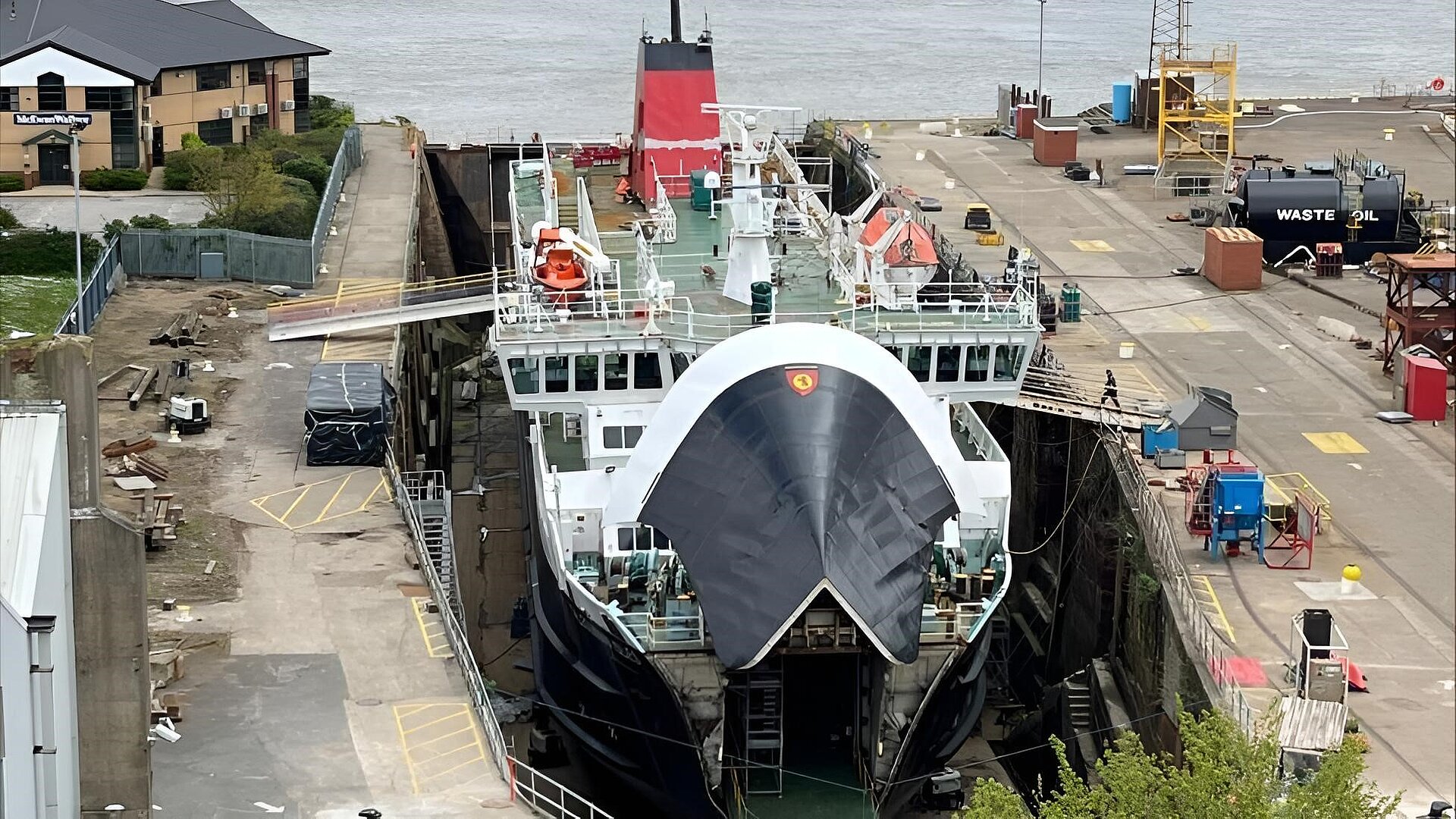Further two-month delay to repairs to CalMac’s RoPax ferry Caledonian Isles

CalMac’s Caledonian Isles in drydock at UK repairer Cammell Laird in Birkenhead (Source: CalMac)
The problems of running a lifeline ferry service with an ageing fleet and a punishing year-round service schedule are only too evident at Scotland’s largest ferry company, Caledonian MacBrayne (CalMac). CalMac’s 31-year old RoPax ferry Caledonian Isles was to have returned to service on CalMac’s busiest route, Ardrossan to Brodick, in June after a major repair project at the UK repairer Cammell Laird in Birkenhead, on the river Mersey. However, it has now been revealed that the vessel won’t return to service until the end of August.
Caledonian Isles went into drydock at the start of 2024 for her scheduled refit at Scottish repairer Dales Marine Services’ Garvel Clyde Drydock in Greenock. It was here that engineers discovered serious steel corrosion issues with the vessel and the ferry was taken out of drydock and sailed to Birkenhead for permanent repairs. Caledonian Isles arrived at the Cammell Laird shipyard on February 11th.
Serious corrosion was found in way of the vessel’s water ballast tank tops and the only way to effectively carry out repairs was to remove the vessel’s diesel auxiliaries to gain easy access. CalMac said that repairs to the ferry were “highly complex” given the “vessel’s age and condition.”
The Scottish ferry operator’s interim CEO, Duncan Mackison, said that they had been told in mid-April by the shipyard that the scope of repairs will take significantly longer than anticipated: “The scope of work provided in February was indicative of and subject to change based on a full analysis of the vessel’s repair needs. The nature of the vessel’s structure is such that this analysis has been ongoing alongside repairs. This is a highly complex repair effort where we have to be mindful of the vessel’s age and condition.” Mackison went on to say that they “had exhausted every possible avenue to avoid removing the engines,” but it became the only option.
As part of the repairs to Caledonian Isles, the ferry’s auxiliary diesels and their bedplates have been removed to allow engineers access to the double bottom water ballast tank tops. Meanwhile, steel around the engines is also being renewed.
Meanwhile, in another blow for CalMac, the entering into service of the company’s new LNG hybrid RoPax ferry Glen Sannox on its service to the isle of Arran has been further delayed. Glen Sannox, which is six years behind schedule, was scheduled to enter service between Ardrossan and Brodick at the end of May. This will not now take place until August, due to a delay in sourcing equipment for the vessel’s dual-fuel LNG Wärtsilä main engines.
Meanwhile, other vessels undergoing repair at Cammell Laird on April 25th included another CalMac ferry, the 5,626gt 2011 built Finlaggan and the Royal Fleet Auxiliary’s newly converted RFA Stirling Castle.
RFA Stirling Castle is the former PSV Island Crown, which was converted into a mother ship for autonomous mine hunting systems in 2023 by Babcock in Devonport.
